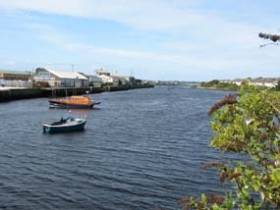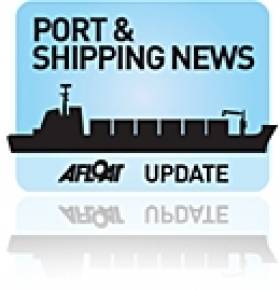Displaying items by tag: Sligo harbour
Port Snapshot: Sligo Harbour Increase of 18% on Traffic for 2016
#SligoShip - Sligo Harbour has a general cargoship in port today, Arundo one of 18 vessels so far that docked in 2016 an increase of 18% in traffic compared to last year, writes Jehan Ashmore.
Afloat had monitored the cargoship Arundo (1985/1,957grt) at the north-west port having sailed from Rostock, Germany.
According to the harbour master, the ship is discharging lignite (coal) alongside the Deepwater Jetty. On completion of unloading, a departing cargo will be baled waste products bound for The Netherlands where it is to be incinerated.
Sligo Harbour can accommodate ships of 3,500 tonnes and is the only working harbour between Galway and Derry.
Under the Harbours Act 1996 the port was transferred from Sligo Port to the control of Sligo County Council. There are two working jetties the aforementioned Deepwater Jetty, 77m in length and Barytes Jetty of 55m.
Sligo Harbour Faces Dredging Costs of €5m
#sligoharbour – Utilising Sligo Harbour to the best affect is the vexed question confronting Sligo County Council who face dredging costs 'in the region of €5m'. The problem is that if the council invested that figure, there is doubt if they could recover that from the Harbour, according to a report of a Council meeting carried by the Sligo Champion.
Councillors were told that the money required for the next stage of Sligo Harbour acquiring its Dumping at Sea Licence was not available. Earlier this year, the Department of the Environment granted a licence under the Foreshore Act to allow the council to undertake dredging works at Sligo Harbour.
The following phase requires the harbour getting a Dumping at Sea Licence from the Environmental Protection Agency.
However, at last week's budget meeting, it became clear that the €12,000 for this phase was not available.
Sligo Champion has much more on the story here






























































